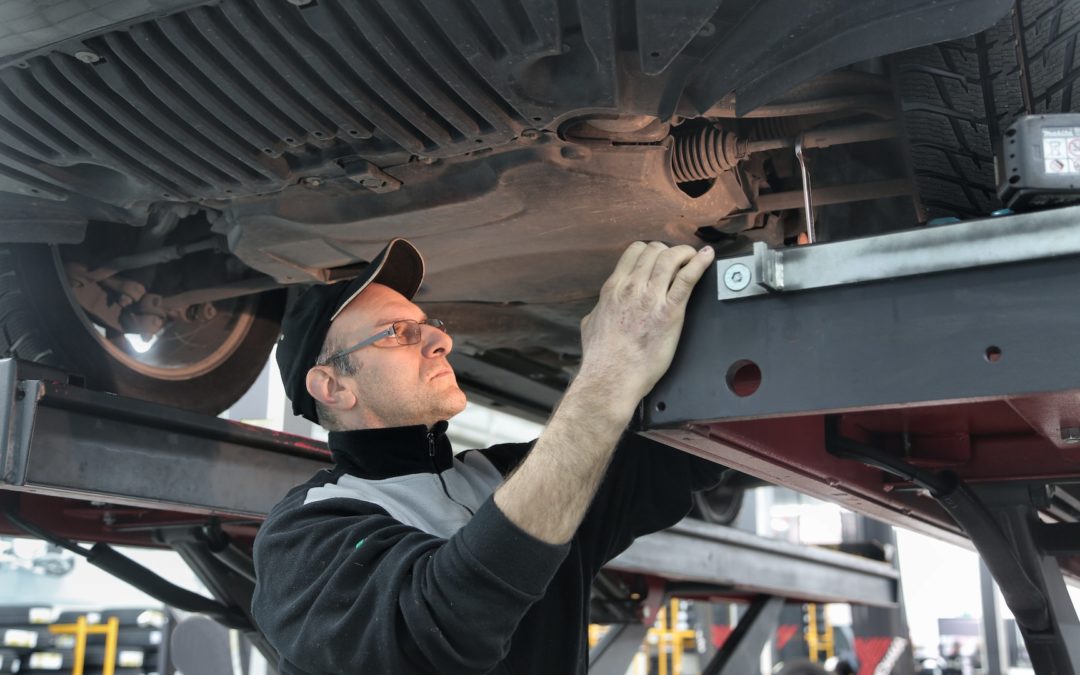Your vehicle’s suspension system is critical to supporting the weight of your vehicle while cushioning the impact to vehicle occupants from the uneven surfaces of the road. If you have ever experienced a bumpy, bouncy ride, there may be a problem with your suspension – specifically your shock absorbers or struts. In this month’s blog, we explain the difference between shocks and struts, how to identify a possible problem, and ways to minimize damage or wear to these critical suspension parts.
Shocks Absorbers or Struts?
Many times, shock absorbers and struts are considered interchangeable suspension components; however, different vehicle makes and models are either equipped with shock absorbers or struts. Whether your vehicle has one or the other, they essentially serve the same purpose. Shocks absorbers or struts are designed to cushion the energy from the springs in the vehicle suspension. This provides greater tire contact with the road, improved steering and road handling, and a smoother ride on rough road surfaces.
- Shock Absorbers: Commonly referred to as “shocks”, shock absorbers are a type of cylinder that is attached to each of the vehicle wheels. As you drive and the tires move up and down from roadside surfaces, the piston within the cylinder moves with the suspension system from the energy produced by the road. As the piston moves, small amounts of fluid release to help slow the movement. The greater the movement produced from the suspension springs; the more absorption happens in the shocks.
- Struts: Unlike shocks, which are a separate component attached to the suspension, struts are a structural component of the suspension system. Struts are often found on newer front-wheel drive vehicles, and some rear-wheel drive vehicles. Because the struts are part of the suspension system, they are lighter but perform a similar function as the shocks.
Your vehicle’s shocks or struts endure a lot of abuse during operation. This is particularly true if you do heavy driving, such as rough roads surfaces or potholes. Shocks and struts can be subjected to wear and tear, or leaks will begin to diminish their overall cushioning performance.
Signs of Failing Shocks or Struts
When your vehicle’s shocks or struts begin to wear, you will see noticeable differences in your driving comfort and handling.
You may experience some of the following:
- Early or premature tire tread wear
- Excessive bouncing, rocking, or swaying during turns
- Bouncing up and down while driving
- Bottoming out
- The vehicle leans more to the front or back, and is especially noticeable when braking
- Unusual noises when driving over bumps
- Overall bumpiness and less smoothness during driving
As your shocks or struts develop problems, they become a greater safety hazard. Problems with the shocks or struts give you less ability to handle the vehicle on the road and should be addressed when first noticed.
Maintenance for Shocks or Struts
There are some ways to keep your shocks or struts in good working condition, which include:
- Getting regular lubrication for ball joints, tie-rods, and other steering system components
- Getting periodic tire rotations and/or balancing
- Replacing shocks or struts every 50K miles. Shocks cannot be replaced with struts, and vice versa. When replacing shocks, always make sure they are replaced on all four wheels.
- Having shocks or struts inspected for wear, corrosion, or leaks
If you want to keep a smooth ride, make sure to be alert to the road hazards, and do your best to avoid them. If you think that you might have a suspension issue, give the service professionals at Campus Repair a call to schedule an appointment.

